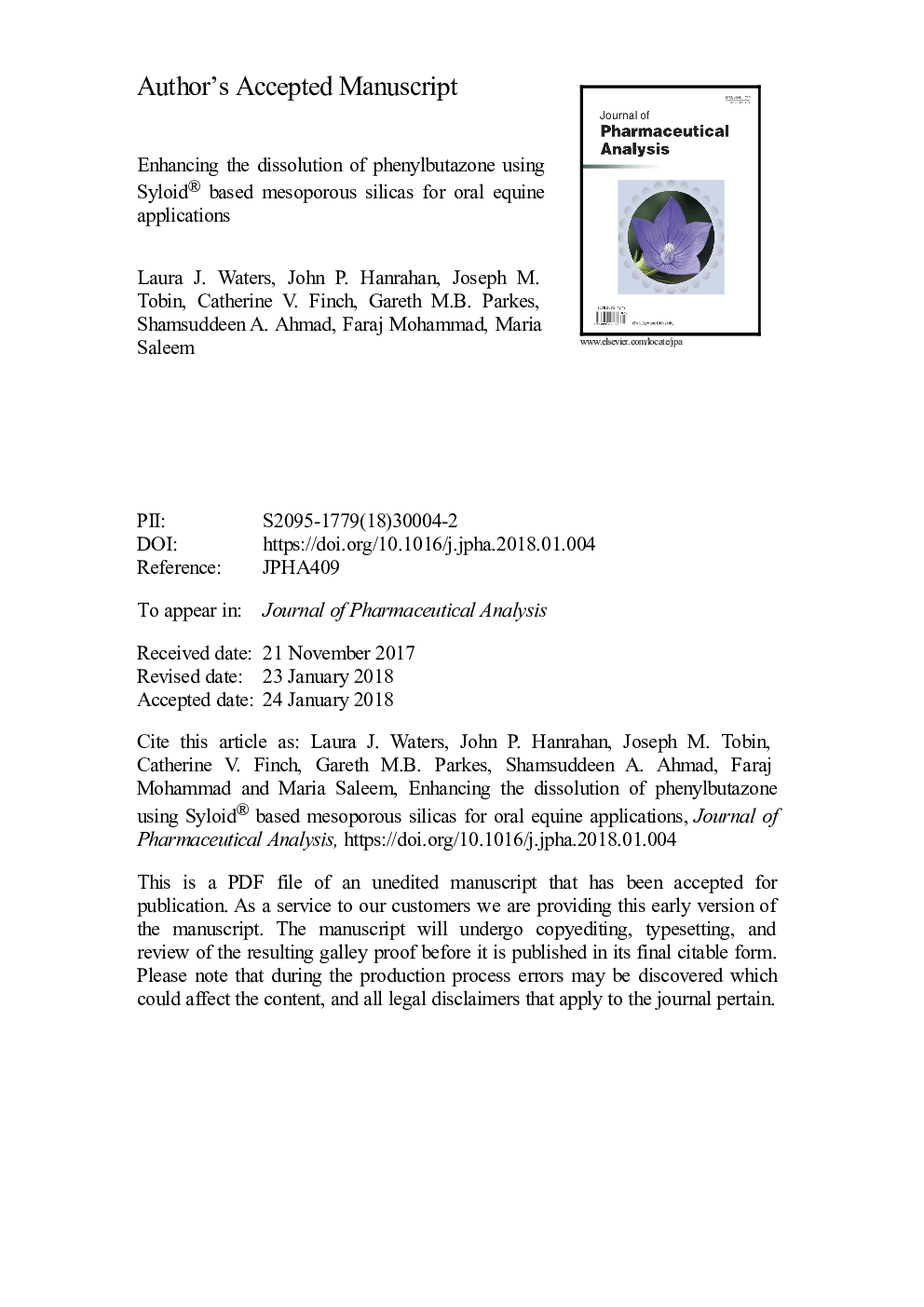| Article ID | Journal | Published Year | Pages | File Type |
|---|---|---|---|---|
| 8521067 | Journal of Pharmaceutical Analysis | 2018 | 18 Pages |
Abstract
Three mesoporous silica excipients (Syloid® silicas AL-1 FP, XDP 3050 and XDP 3150) were formulated with a model drug known for its poor aqueous solubility, namely phenylbutazone, in an attempt to enhance the extent and rate of drug dissolution. Although other forms of mesoporous silica have been investigated in previous studies, the effect of inclusion with these specific Syloid® silica based excipients and more interestingly, with phenylbutazone, is unknown. This work reports a significant enhancement for both the extent and rate of drug release for all three forms of Syloid® silica at a 1:1 drug:silica ratio over a period of 30â¯min. An explanation for this increase was determined to be conversion to the amorphous form and an enhanced drug loading ability within the pores. Differences between the release profiles of the three silicas were concluded to be a consequence of the physicochemical differences between the three forms. Overall, this study confirms that Syloid® silica based excipients can be used to enhance dissolution, and potentially therefore bioavailability, for compounds with poor aqueous solubility such as phenylbutazone. In addition, it has been confirmed that drug release can be carefully tailored based on the choice of Syloid® silica and desired release profile.
Related Topics
Health Sciences
Pharmacology, Toxicology and Pharmaceutical Science
Pharmaceutical Science
Authors
Laura J. Waters, John P. Hanrahan, Joseph M. Tobin, Catherine V. Finch, Gareth M.B. Parkes, Shamsuddeen A. Ahmad, Faraj Mohammad, Maria Saleem,
